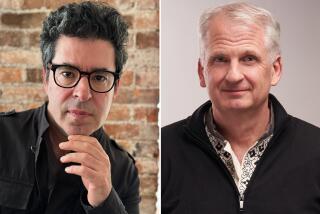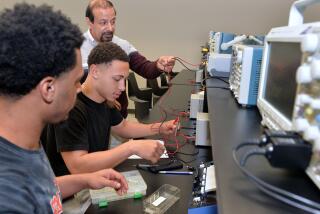âThe Marketplace of Ideasâ by Louis Menand
The Marketplace of Ideas
Reform and Resistance in the American University
Louis Menand
W.W. Norton: 176 pp., $24.95
American higher education, we are often told, is the envy of the world. Most of the great research universities are on American soil, and the combination of flexibility and focus offered by U.S. institutions draws talented people from around the world. Yet our elite colleges and universities are often plagued by self-doubt or by the lack of clear, shared objectives. What are the skills, or the qualities of mind and spirit, that colleges should cultivate? How should we educate our professors so they can be effective teachers and creative researchers? As the culture and economy change, what are the prospects for change within the university?
Louis Menand, professor of English at Harvard, intellectual historian and staff writer at the New Yorker, is well-placed to comment, as the subtitle of his âThe Marketplace of Ideasâ says, on âreform and resistance in the American university.â He was part of Larry Summersâ effort to reform the Harvard core undergraduate curriculum, and he has long been interested in American traditions of translating ideas into programs and institutions. He begins his new book with this challenge: How do you create a general education program required by all undergraduates? Rather than argue for any particular set of classes or distribution requirements, Menand describes the evolution in this country of a model in which the college years have been kept separate from anything that resembles vocational or professional training. Defenders of either the âbooks everyone should have readâ POV or of the âskills everyone should have acquiredâ have usually been stymied by âa superstition: that the practical is the enemy of the true.â Menandâs message here: It doesnât have to be this way.
At the heart of a core curriculum are the humanities -- and Menand charts some of the major changes that have taken place in this field. About 20 years ago, post-structuralism, cultural studies and deconstruction shook up departments of literature, history and philosophy, but Menand emphasizes that this was all part of the normal jockeying for attention and power among insiders. The more fundamental changes happening in the humanities and for universities in general, he says, were demographic and professional ones. From 1945 to 1975, the number of undergraduates in the U.S. increased by almost 500%, and the number of graduate students increased by nearly 900%. Professional allegiances during this period became much more important to faculty than school spirit, and the emphasis on specialized research increased greatly. The Cold War university created a system in which being a great professor meant being valued by other specialists in oneâs discipline. Sure, some teaching was still required, but professional validation came from increasingly focused publications.
Menand sees the current vogue for all things âinterdisciplinaryâ as a predictable reaction to the intense allegiances to disciplines during those high-growth years after World War II. Professionalization through an emphasis on specialized, sometimes esoteric research continues today. Even when faculty members attack their own departments, they are still playing the professional game. If the veneer of iconoclasm helps you get published, then you can ride this radicalism until you get tenure or even get appointed chair of an interdisciplinary program. âAcademics donât want to appear to be conformists: their success depends on it,â Menand notes sarcastically.
Menandâs final chapter, âWhy Do Professors All Think Alike?,â discusses the frequent charge that faculty members are predominantly liberal. Well, they are, although most are mainstream in their politics. More than 95% of humanities professors at elite institutions voted for John Kerry, 0% for Bush. More generally, only 19% of faculty identify as conservative -- Menand writes that itâs the older faculty who are more to the left than their younger colleagues, and so he anticipates that professors as a whole will drift toward the center left over time.
But the real reason professors tend toward conformity is a training system that reinforces the status quo. It takes far longer to earn most doctorates than to get degrees in law or medicine, and Menand notes that the system of graduate education is designed to produce more low-paid ABDs (All-But-Dissertation) than PhDs. If the graduate student finishes and is lucky enough to find full-time work, that young prof will be very invested in the models already used in what is likely to have been at least a 10-year apprenticeship. âThe academic profession in some areas,â Menand notes, âis not reproducing itself so much as cloning itself.â
Of course, âthinkingâ shouldnât be reduced to political affiliation, and literature professors and biologists, musicologists and mathematicians donât really think alike. If you wonder why people get passionate about the study of mathematics or spend their lives reading romantic poetry or examining philosophical problems, you wonât discover anything from âThe Marketplace of Ideas.â The book doesnât at all consider the joy of learning but only the pursuit of academic careers. The passion for scholarship still animates professors and their students, but this doesnât interest Menand here.
This slim volume of loosely linked essays doesnât offer any solutions to the resistance to innovation at Americaâs best universities, but it does show how we have created professional academic conformity. Menand recognizes that even the most traditional schools can be âoxygenatedâ by interaction with nonacademic economic and cultural forces. (At Wesleyan University, we have started an Institute for the Study of Public Life to bring some of those influences to bear on our campus.)
The trick is to balance the virtues of outside influence with the essential protections of academic freedom so that research and teaching donât merely replicate the worst aspects of commercial and professional culture. The love of learning can be invigorated by engagement with the broad spectrum of economic and cultural life. In the long run, the practical is not the enemy of the true.
Roth is the president of Wesleyan University and the author of âThe Ironistâs Cage.â
More to Read
The biggest entertainment stories
Get our big stories about Hollywood, film, television, music, arts, culture and more right in your inbox as soon as they publish.
You may occasionally receive promotional content from the Los Angeles Times.










